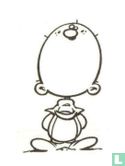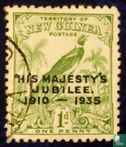- Catalogue administrator
- 177 messages
- December 14, 2009 02:00
Een vraagje, wat is het verschil tussen bijvoorbeeld “Roodbruin” en “Rood|bruin”?
En wat wordt er bedoeld met “Magentarood”?
Volgens mij is het Magenta of Rood. Of wat betekend |bruin?
Het valt me ook op dat er een aantal kleuromschrijvingen zijn die dubbel ingevoerd zijn, maar dan met spellingsfouten, of niet dubbel maar met spellingsfouten.
Bijvoorbeeld de kleur “Donkerblauw” die ook als “Donkeblauw” en “Donkerbauw” ingeschreven staat. Of “Donkrgroen” of “Grau/schiefer”
Rose en Roze, Veel kleurig en Veelkleurig, Wirt en Wit,
En sommige omschrijvingen zijn wel een beetje vaag. Zoals dofrood, of donkergroenblauw op geel, Donkerlilabruin/oker. Of Helrood (Helderrood?), Zwart-xit? en Helblauw, Of MK, Q, E, C, etc. Kan me er niets bij voorstellen.
A question, what is the difference between, for example, “Red brown” and “Red | brown”?
And what is meant by “Magenta Red”?
I think it's Magenta or Red. Or what does | brown mean?
I also notice that there are a number of color descriptions that have been entered twice, but with spelling errors, or not double but with spelling errors.
For example, the color “Dark Blue”, which is also registered as “Dark Blue” and “Dark Blue”. Or “Dark green” or “Grau / schiefer”
Rose and Pink, Many colored and Multicolored, Wirt and White,
And some descriptions are a bit vague. Such as dull red, or dark green-blue on yellow, Dark lilac brown / ocher. Or Bright Red (Bright Red?), Black-xit? and Bright Blue, Or MK, Q, E, C, etc. Can't imagine anything.
Heb ook een vraagje over 2 postzegels en hun kleuren. Gaat om postzegel Catawiki nr. 289429 en 289403. De eerste genoemde staat geen kleur bij en vraag me dus af wat voor kleur dit is? De 2e genoemde staat bij kleur roze, maar dit lijkt me te rood. Ik vraag dit omdat ik dacht de 1e (289429) te hebben, die van mij is heel flauw roze is, welke toch dicht in de buurt komt qua kleur.
Also have a question about 2 stamps and their colors. This concerns stamp Catawiki no. 289429 and 289403 . The first mentioned has no color and so I wonder what color this is? The second mentioned is at color pink, but this seems too red. I ask this because I thought I had the 1st (289429), mine is very faintly pink, which is very close in color.
- Catalogue administrator
- 1,755 messages
- October 01, 2010 16:37
@DeaR
De kleuren van items in de catalogus zijn afhankelijk van onder meer
1) de kwaliteit van de scanner en of camera
2) de gebruikte instellingen van de scanner\camera
3) de beeldbewerking
4) de instellingen van de monitor
plenty kans dus dat de kleurtjes die je op je beeldscherm ziet afwijken van het origineel.
@DeaR
The colors of items in the catalog depend on, among other things,
1) the quality of the scanner and / or camera
2) the used settings of the scanner \ camera
3) image editing
4) monitor settings
Nummer 289429 en 289403 zijn versies in de zogeheten aardverven. Een kenmerk hiervan is dat de kleur nooit helemaal constant is, omdat de aardverven op zicht werden gemengd. Zelfs bij de beste scanner en scherm kun je dus zegels tegen komen van een iets andere kleur. De 289403 is altijd in tanding 14. De kleur kan dus in principe gelijk zijn aan een exemplaar van de 289429. Je kunt het ook zien aan het soort: 289403 is een zegel (hoofdnummer ongeacht tanding) de 289429 een tandingvarieteit.
De 1894 versie is gedrukt met synthetische inkt, deze zijn altijd gelijk in kleur. Zelfs in de gedrukte NVPH is het verschil lastig te zien, maar de 1894 druk komt wat harder over en neigt iets meer naar rood. Verzamelaars (en soms ook handelaren) halen ze nogal eens door elkaar. Met vergeljken kun je ze echter best uit elkaar houden. Maar er is gelukkig ook nog een tweede aanknopingspunt: de 2e druk is alleen uitgegeven met kamtanding 12 1/2. Andere tandingen zijn altijd de aardverven. Daar heb je meteen het eikpunt voor vergelijkingen. Voor de overige waarden van de serie geldt iets soortgelijks.
Number 289429 and 289403 are versions in the so-called earth paints. A characteristic of this is that the color is never completely constant, because the earth paints were mixed by sight. So even with the best scanner and screen you can come across stamps of a slightly different color. The 289403 is always in perforation 14. The color can therefore in principle be the same as an example of the 289429. You can also tell by the type: 289403 is a stamp (main number regardless of perforation) the 289429 a perforation variety.
The 1894 version is printed with synthetic inks, which are always the same in color. Even in the printed NVPH the difference is hard to see, but the 1894 print comes across as a bit harder and tends a little more towards red. Collectors (and sometimes also dealers) often get them mixed up. However, you can tell them apart by comparing. But fortunately there is also a second clue: the 2nd edition was only issued with comb serration 12 1/2. Other perforations are always the earth paints. There you immediately have the target for comparisons. Something similar applies to the other values of the series.
Het wezenlijk verschil tussen de twee zegels is niet de kleur (helderroze voor de 1ste (289429) en roze voor de 2de (289403), maar de tanding van de zegels.
De normale tanding voor deze serie is volgens Yvert & Tellier 12,5, 13,5, 11,5 × 12 of 12,5 × 12.
De eerste zegel (289429) heeft echter een uitzonderlijke tanding van 14 en heeft daarom ook een uitzonderlijke waarde.
The essential difference between the two stamps is not the color (bright pink for the 1st ( 289429 ) and pink for the 2nd ( 289403 ), but the perforation of the stamps.
The normal perforation for this series is according to Yvert & amp; Tellier 12.5, 13.5, 11.5 × 12 or 12.5 × 12.
However, the first stamp (289429) has an exceptional perforation of 14 and therefore also has an exceptional value.
OK, heb ze geteld: 14 stuks (hoek tot hoek)maar helaas is hij beschadigd, jammer.
@ Bedankt allemaal, voor de uitleg!
OK, I counted them: 14 pieces (corner to corner) but unfortunately it is damaged, too bad.
@ Thank you all for the explanation!
Tja, maar zo meet je echt geen tanding!
Dat is het aantal tanden per 2 centimeter. Je kunt het beste een tandingmeter gebruiken, die is voor een paar dubbeltjes in de postzegelhandel te krijgen.
Well, but you really don't measure perforation like that!
That is the number of teeth per 2 centimeters. It is best to use a perforation gauge, which is available in the stamp trade for a few dimes.



